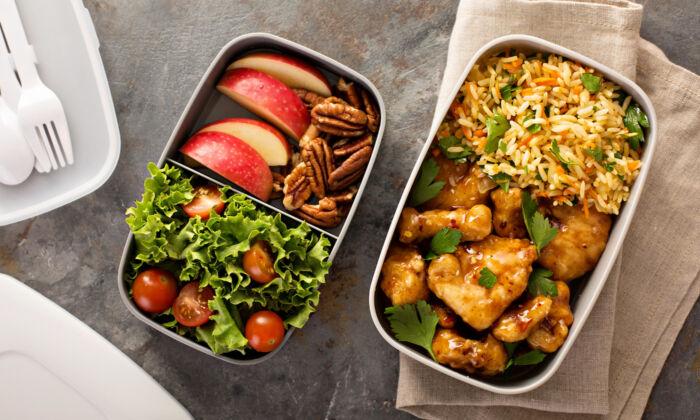I know people who try to convince themselves they can buy lunch every day for less than they'd spend if they brought a bagged lunch to work. That kind of flawed thinking could well be the reason those same people complain that they do not make enough money to save any of it. Eating lunch out day after day is expensive. Here, let me do the math: $15 x 5 Days = $75 x 50 weeks = $3,750 per year. And that’s just a quick estimate.
If you could cut that number in half by bringing your lunch to work, you'd still have $1,875 for your savings account. However, I’m certain that with the right incentive (money in the bank is a great one), you could do even better than that.
But would you? Would you conscientiously transfer $35 or more to your savings account every week to reward your brown-bag efforts? Only you can answer that question, but I have every confidence that you would.
Lunch Invest in a Good Lunch Container
For me, a true brown bag is too flimsy. I want a lunch bag that is insulated, sturdy, leakproof and as attractive as possible. Cruise on over to Amazon, search “lunch bags” and you’re sure to find hundreds to choose from that are as practical as they are cute. Look for one made of neoprene and that is insulated with a zipper closure. The test of a good lunch container is how often it is used.Use Bento Boxes
These are portable food boxes with compartments that fit inside the lunch box to keep wet things wet, dry things dry and all things visually appetizing. The best bento boxes, in my opinion, have tight-fitting lids. I use a set of four compartment bento boxes and find myself using them for storing leftovers as well as in a lunch bag. While not completely leakproof (I wouldn’t fill one with milk, for example), they keep lunch items fresh and tasty, and most are leak-resistant.Pack Heat
Not that kind of heat—I’m talking about carrying a hot lunch to work or school in a wide-mouth thermos. You can fill it with hot soup, or any hot food you can fit in it. It will stay hot for at least five hours. Or fill it with cold food to stay cold for that long as well. Thermos Stainless Steel King Food Jar (you can easily find this at Amazon, but also available elsewhere) has a 16-ounce capacity and is super well insulated with stainless steel. No worries about the thing breaking like the glass-lined thermoses you may remember. The wide mouth makes this thermos easy to fill, and the extra-large lid doubles as a serving bowl. And surprise! There’s a handy fold-up spoon tucked into the lid. Of course, there are many thermoses from which to choose. I just mention this one because it is well priced and practical in every way.Enjoy Extra Time
There’s no doubt that going out to eat lunch takes more time than going to the break room and pulling lunch from a bag. It doesn’t take most people an hour for the eating part. By bringing your lunch to work you could easily end up with 30 minutes of “found time.” Take a walk or catch up on your personal email. Knit, crochet, or even better, grab a nap.Strategic Meal Planning
When you make dinner, think strategically about leftovers. Make extra rice; add another chicken breast to the pan. As you clean up, divvy up the leftovers into your bento boxes or other containers. Add a salad and you'll be good to go for the next day.If you buy your lunch on a fairly regular basis, let’s assume that has become a habit—one you decide you need to break. The way to do that successfully is to replace that bad habit with a new good habit. Adding money to your savings account equal to the amount you are not spending on pricey meals out will quickly develop into a wonderful new habit—one that will come back to bless you in the future.





